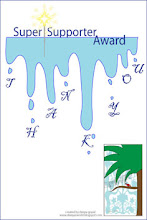Today is yet another historic day in the history of the great Indian Freedom Movement. It’s the 66th anniversary of the hoisting of the National Tri-color for the first time on the Indian soil by Netaji Subhash Chandra Bose.
It was on this day i.e. December 30, 1943, that one of the greatest freedom fighters in the history of modern India, Netaji Subhash Chandra Bose had hoisted the National Flag for the first time at the Gymkhana Ground, Port Blair, the current capital of Andaman & Nicobar Islands, declaring the Islands, the first Indian Territory freed from the British rule.
The Andamans, at one time, precisely during 1942, had fallen into the strong hands of the Japanese, when they had made a fantastic effort and overpowered the British. And it was during that time that Subhash Chandra Bose had paid a visit to the terrifying Cellular Jail, during his brilliant period of escapade to various places outside India.
While in Singapore, Rash Behari Bose had handed over the responsibilities of Indian Independence League to Subhash Chandra. It was here that he formally announced the establishment of Azad Hind Fauj, and was christened ‘Netaji’. After conducting several meetings, Bose visited the Andamans and Cellular Jail in 1943. The eerie muteness of the place reminded him of the torture and toil the prisoners had to face in the hands of the merciless British oppressors.
And it was here on 30th December, 1943 that Netaji had hoisted the Indian National flag, making the historic effort to make the Andaman and Nicobar Islands free from the yoke of the oppressing British.
During the Second World War, the Andaman and Nicobar Islands fell to the Japanese forces on 23rd March 1942, when the ships of the Imperial Japanese Navy swooped on the islands of Ross and Chatham which were the entry points to Port Blair. Within the next two days, the Japanese completed the occupation of Port Blair, arrested the remaining British officials and established their own administration. It lasted till October 1945. Subhash Chandra Bose visited Andamans in December 1943.
Netaji took over the direct command of the Indian National Army on 25th August 1943. He inspired his companions in these words:
"Comrades, Officers and Men, with your unstinted supported and unflinching loyalty, Azad Hind Fauj (The Indian National Army), will become the instrument of India’s liberation.... With the slogan - “Delhi Chalo” (onwards to Delhi).... on our lips let us continue to fight until our national flag waves over the Viceroy’s house in New Delhi and Azad Hind Fauj holds the victory parade inside the ancient Red Fort of the Indian Metropolis."
The provisionary Government of the Azad Hind was formed on 21st October 1943. The event was announced solemnly at a meeting of Indian representatives from all over East Asia at ‘Sathey Cinema Building’ in Singapore. A proclamation was issued under the signatures of Netaji Subhash Chandra Bose as the Head of State, Prime Minister and Minister for Foreign Affairs, who took the oath of allegiance to India in the following words:
"In the name of God, I take this sacred oath that to liberate India and the thirty eight crores of my countrymen I, Subhash Chandra Bose, will continue this sacred war of freedom until the last breath of my life. I shall always remain a servant of India and look after the welfare of the 38 crores of Indian brothers and sisters. This shall be for me my highest duty. Even after winning freedom, I will always be prepared to shed the last drop of my blood for the preservation of India’s freedom."
The provisional government of the Azad Hind was recognized by Japan on 23rd October 1943, and was also recognized by Germany, Way, Manchuko, Philippines, Burma, National China, Hungry and Croatia.
On 8th November 1943, Netaji announced in a press release that the return of the Andamans to the Indians would be the first territory to be liberated from the British yoke. After mutual discussions, it was settled that the defence and foreign affairs would continue under the Japanese government, but the charge of other departments of the administration would be handed over to the Azad Hind Government.
At mid-day on 29th December 1943, Netaji accompanied by Sarvashri Anand Mohan Sahay, Captain Rawat - ADC and Col. D.S. Raju, personal physician of Netaji, landed at the Port Blair aerodrome in the Andamans. He was received by the Japanese admiral at Port Blair. The enthusiastic Indians and Burmese also accorded a warm reception to him. Netaji went around the historic Cellular Jail where the walls told him, in silence, the woes of the political prisoners who were tortured there. He also saw the courage and enduring spirit that braved the vehemence of the British authorities. Netaji paid glowing tributes to the noble sacrifices of the Indian heroes.
On the following day, 30th December 1943, the National Flag was hoisted by Netaji on the liberated Indian soil, an act first of its kind in the history of the oppressive British rule in India. All the ceremonies of retrieving the lost territory from the enemy were held with joy, pride and jubilation. The national anthem i.e. the anthem of the Azad Hind Fauj (The Indian National Army) was sung in chorus by all present, which added to the gravity of the occasion.
During the course of the day, the National Flag was hoisted at the Gymkhana Ground at Port Blair and atop the British Chief Commissioner’s residence in the Ross Island, the then capital of the Islands. Netaji expressed the hope that some day soon the same flag would fly on the Viceroy’s House in New Delhi.
In a press interview in the first quarter of 1944, Netaji had stated that by the acquisition of the Andaman and Nicobar Islands, the provisional government had become a national entity in fact as well as in law. The liberation of the Andamans had symbolic significance, because the British always used them as a jail for political prisoners. Part by part, Indian territory would be liberated, but it was always the first plot of land that held the significance. The Andamans were renamed as `Shaheed` in the memory of these martyrs and Nicobar as `Swaraj`.
The administration of the Andaman and Nicobar Islands was formally handed over to the ‘Azad Hind Government’ on 17th February 1944.
His historic visit to the island made a symbolic fulfillment of his promise that INA would stand on the Indian soil by the end of 1943.
A memorial stands today at the Andaman Club, Netaji Stadium, the erstwhile Gymkhana Ground as a testimony of his visit to the Islands and the indelible historic moment of the very first hoisting of the country's tri-color.
Salute to Netaji!!!
*** JAI HIND ***
Excerpts & stats courtesy: www.indianetzone.com



































